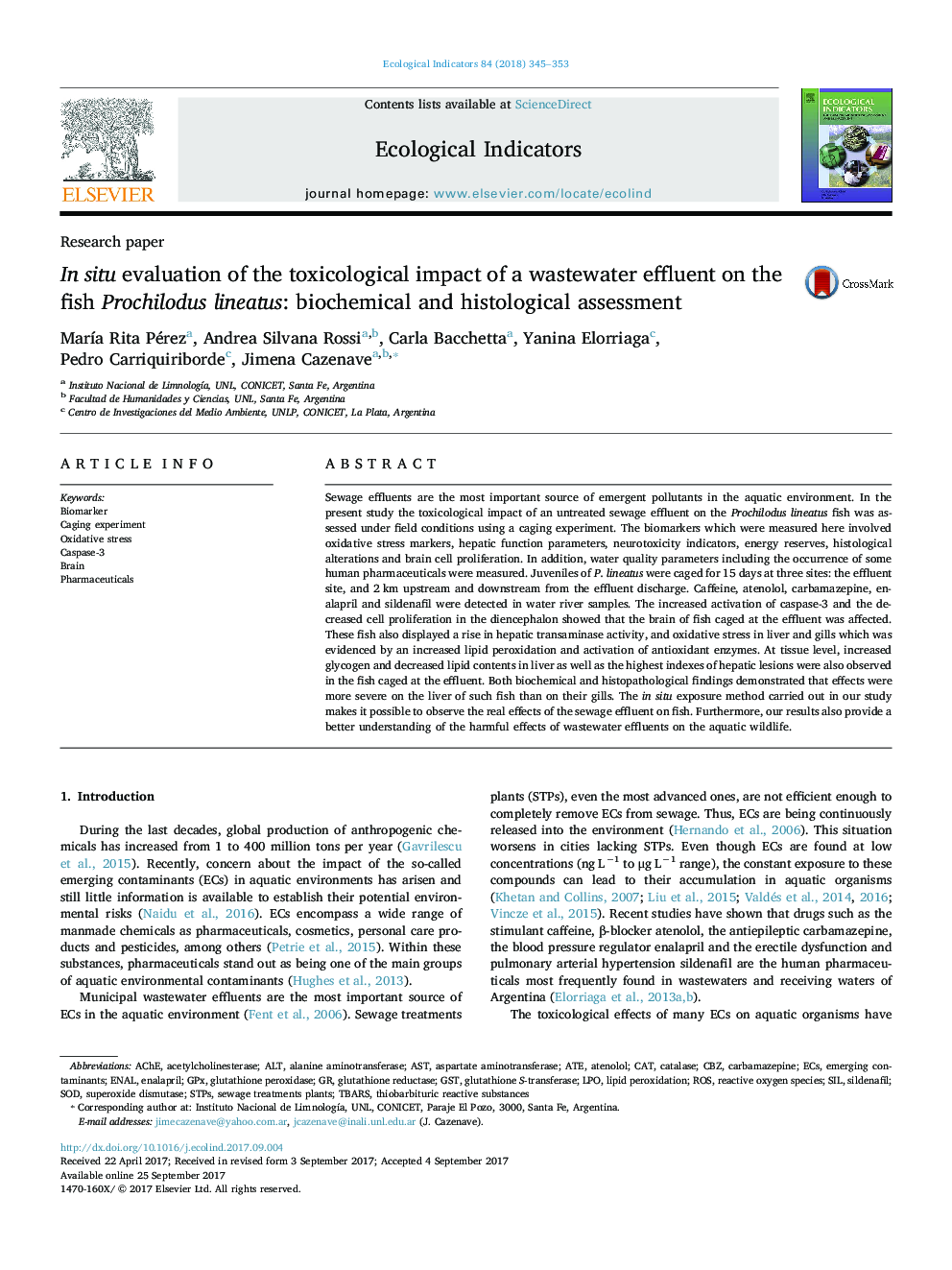| کد مقاله | کد نشریه | سال انتشار | مقاله انگلیسی | نسخه تمام متن |
|---|---|---|---|---|
| 5741557 | 1617118 | 2018 | 9 صفحه PDF | دانلود رایگان |

- The toxicological impact of a sewage effluent was assessed using caged fish.
- Caffeine, atenolol, carbamazepine, enalapril and sildenafil were detected in water.
- Effluent caused apoptosis and a decrease in cell proliferation in the fish brain.
- Tissue damages were more severe on the liver than on the gills.
- The exposure to the untreated sewage triggered a mobilization of energy reserves.
Sewage effluents are the most important source of emergent pollutants in the aquatic environment. In the present study the toxicological impact of an untreated sewage effluent on the Prochilodus lineatus fish was assessed under field conditions using a caging experiment. The biomarkers which were measured here involved oxidative stress markers, hepatic function parameters, neurotoxicity indicators, energy reserves, histological alterations and brain cell proliferation. In addition, water quality parameters including the occurrence of some human pharmaceuticals were measured. Juveniles of P. lineatus were caged for 15Â days at three sites: the effluent site, and 2Â km upstream and downstream from the effluent discharge. Caffeine, atenolol, carbamazepine, enalapril and sildenafil were detected in water river samples. The increased activation of caspase-3 and the decreased cell proliferation in the diencephalon showed that the brain of fish caged at the effluent was affected. These fish also displayed a rise in hepatic transaminase activity, and oxidative stress in liver and gills which was evidenced by an increased lipid peroxidation and activation of antioxidant enzymes. At tissue level, increased glycogen and decreased lipid contents in liver as well as the highest indexes of hepatic lesions were also observed in the fish caged at the effluent. Both biochemical and histopathological findings demonstrated that effects were more severe on the liver of such fish than on their gills. The in situ exposure method carried out in our study makes it possible to observe the real effects of the sewage effluent on fish. Furthermore, our results also provide a better understanding of the harmful effects of wastewater effluents on the aquatic wildlife.
Journal: Ecological Indicators - Volume 84, January 2018, Pages 345-353